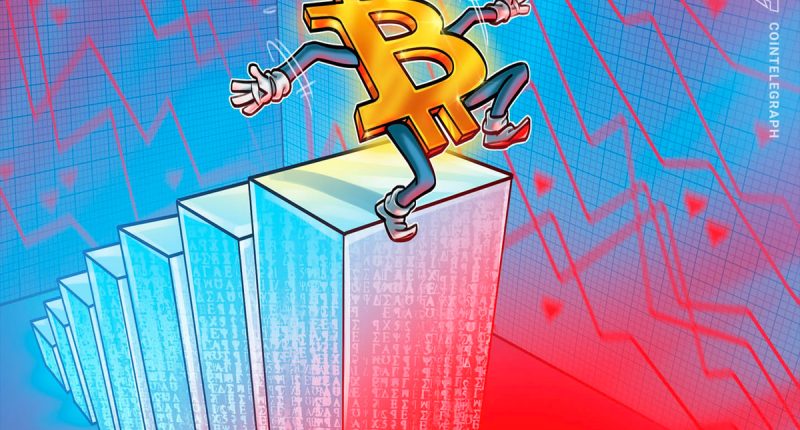Bitcoin (BTC) is facing its major correction phase after undergoing a strong price rally in 2024. Notably, the BTC/USD pair is down circa 13.5% when measured from its year-to-date (and all-time) high of nearly $74,000.
Bitcoin’s ongoing price decline appears like a bull market correction, allowing the market to adjust and consolidate gains before potentially moving higher again. Previous bull market corrections in the Bitcoin market have witnessed prices declining 20-40%, raising possibilities of similar downturns during the 2024 bull market.

2020-2021 Bitcoin fractal predicts 35% price crash
Bitcoin’s ongoing price explosion has left its market in a deeply overbought state.
As of March 22, Bitcoin’s weekly Relative Strength Index (RSI) stood at approximately 77. An RSI above 70 typically indicates overbought conditions, suggesting that Bitcoin’s market might see a price correction as traders potentially move to sell off their holdings.
Historically, weekly RSI levels above 70 have preceded strong price corrections toward the 50-week exponential moving average (50-week EMA; the red wave). The Bitcoin chart below shows prices undergoing a similar downturn during the 2020-2021 bull run.

In 2024, Bitcoin’s price trajectory appears poised for an upward trend, targeting the ascending trendline resistance around $84,000 by the early months of April or May.
Following this potential peak, there’s a significant chance it will pull back toward its 50-week EMA near $40,000, suggesting a 2020-like corrective phase after the ascent.
In other words, BTC’s price risks dropping 35% by June when measured from current price levels around $64,350.
Bitcoin NUPL hints strong profit-taking sentiment
More signals for a potential Bitcoin price crash comes from its Net Unrealized Profit/Loss (NUPL) data.
For the unversed: NUPL represents the difference between market cap and realized cap divided by market cap. As such, an NUPL reading above zero indicates investors are in profit and an increasing trend in value means more investors are beginning to be in profit.
Related: Backtested DCA strategy suggests selling Bitcoin at ‘extreme greed’ most profitable
This phase indicates the increasing reason to take profit, which leads to an increase in sell pressure. Interestingly, earlier this month, Bitcoin NUPL reached 0.64, a reading that has historically preceded rising profit-taking sentiment, leading to sharp BTC price drops.

What do Bitcoin analysts think?
Analyst Rekt Capital argues that Bitcoin is positioned within a “Danger Zone” following its latest price drop. This area, highlighted in red on the associated chart, is significant because it aligns with the region where Bitcoin has historically experienced retracements before its halving events.

Rekt Capital anticipates BTC’s price to drop toward the $40,000-42,000 area before halving in April.
Popular trader Aksel Kibar’s Bitcoin analysis is relatively bullish, predicting the BTC price to stabilize around $57,500.

This downside target coincides with the upper trendline of Bitcoin’s previous ascending channel trend.
This article does not contain investment advice or recommendations. Every investment and trading move involves risk, and readers should conduct their own research when making a decision.
Also Read More: World News | Entertainment News | Celebrity News







